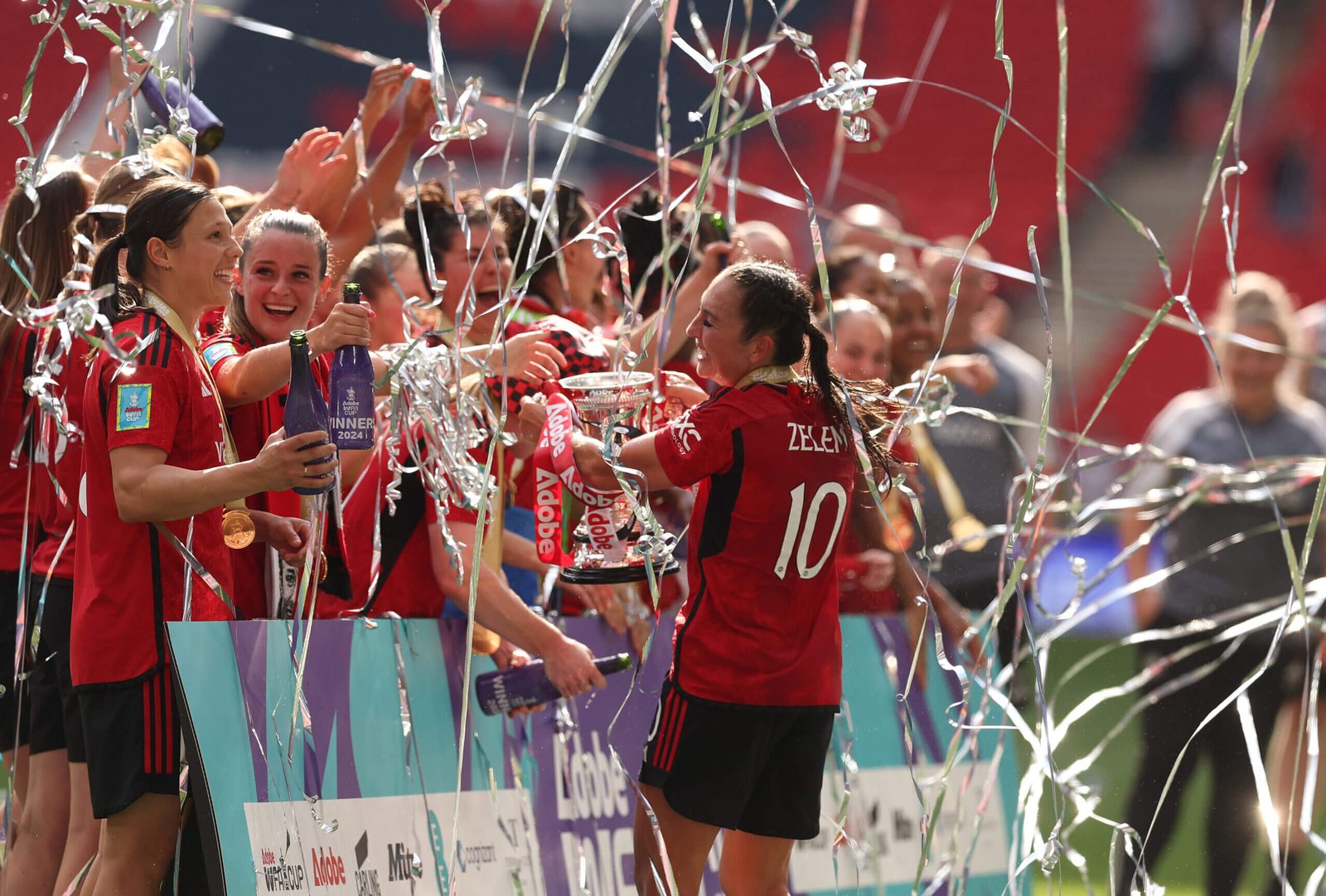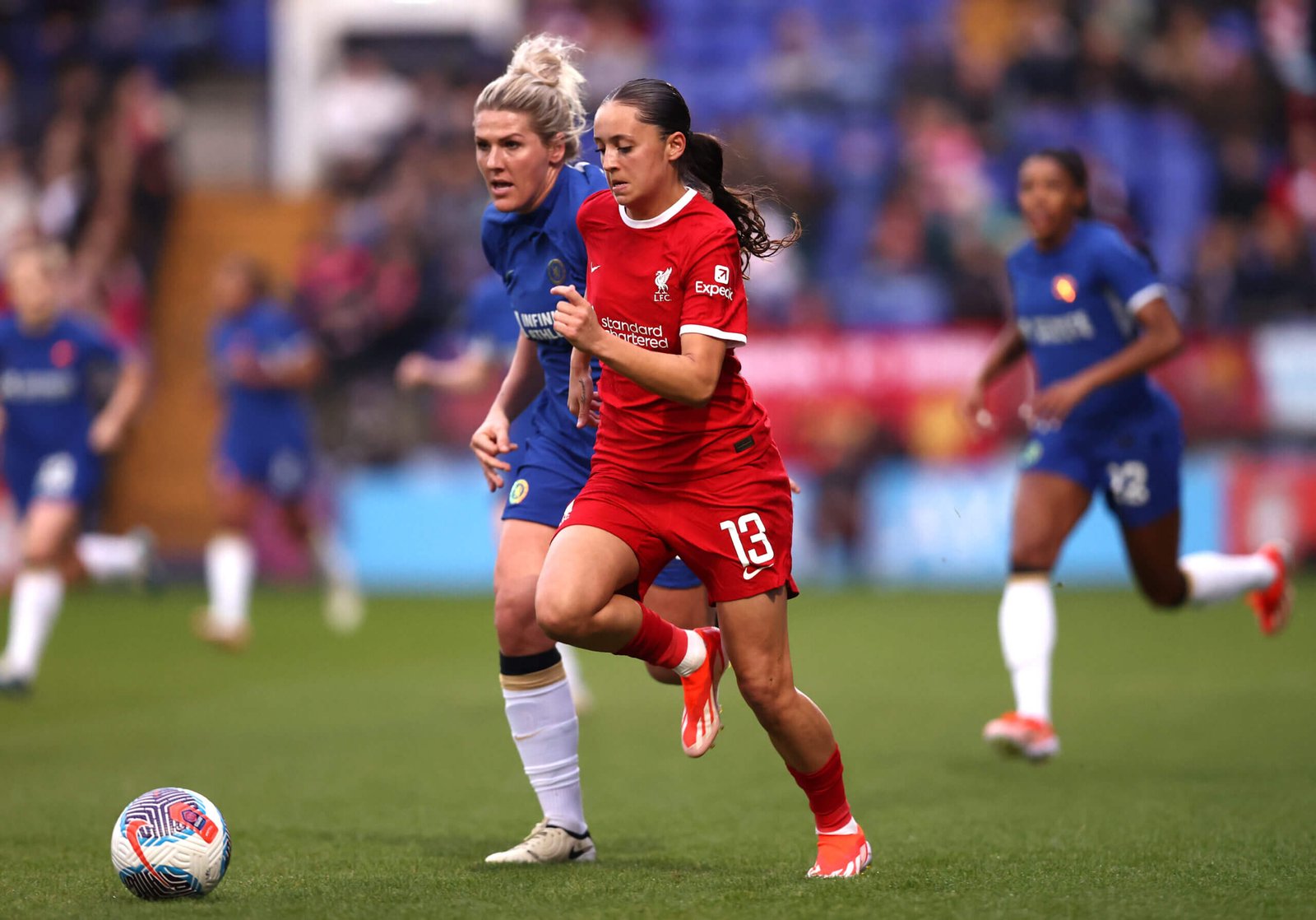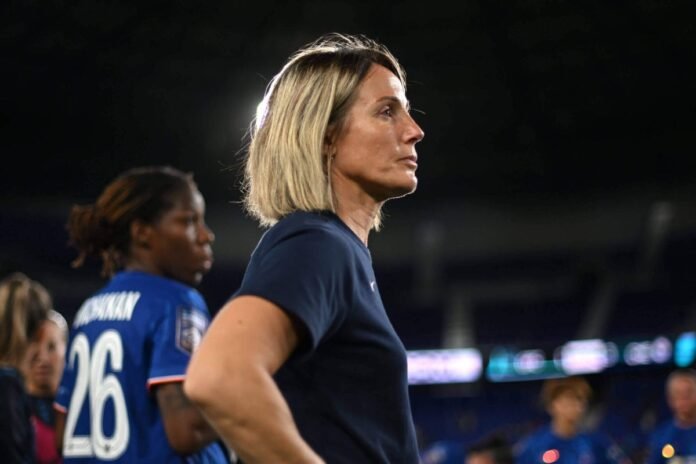Welcome to season 14 of the Women’s Super League. Or, as it could be taglined, WSL: A New Era.
Nowhere is the fresh start more apparent than at Chelsea. After five successive titles, Emma Hayes has left for the United States women’s national team job, with Sonia Bompastor taking over her spot. Might Chelsea’s dominance finally end?
Arsenal and Manchester City will hope so, but Manchester United have experienced a tumultuous summer, with off-field uncertainty and England internationals Mary Earps and Katie Zelem leaving.
Liverpool, who finished fourth last season, have strengthened again as they look to push into the top three.
We need to talk friendship bracelets, too…
No Hayes, no problem?
All eyes are on Chelsea as they enter unfamiliar territory. Manchester City manager Gareth Taylor called Hayes’ departure, after 12 years and seven league titles, an “opportunity” at the WSL media day last week.
Looking at the changes at Chelsea, Hayes took five members of staff with her (Stuart Searle, Denise Reddy, Bart Caubergh, Ferdia O’Hanrahan and Cameron Meighan), while long-serving players Fran Kirby, Melanie Leupolz, Maren Mjelde and Jess Carter have also left. Then there are the absentees: Sam Kerr, Mia Fishel, Aniek Nouwen and Sophie Ingle are out with anterior cruciate ligament (ACL) injuries.
To fill some of the holes, Chelsea have brought in two players from Paris Saint-Germain, forward Sandy Baltimore and midfielder Oriane Jean-Francois, with England right-back Lucy Bronze, 32, also arriving from Barcelona.
Bompastor comes with pedigree — a Champions League and French title winner as a manager and player — and Arsenal head coach Jonas Eidevall believes she will augment, rather than disrupt, what Chelsea already have.
Chelsea manager Sonia Bompastor has big shoes to fill (Tim Nwachukwu/Getty Images)
For the first time in WSL history, all the clubs will be affiliated with a men’s Premier League team.
There are two ways of assessing this. One is that Premier League clubs are placing greater emphasis on funding full-time women’s football, which is a testament to the game’s growth and potential.
Alternatively, a league that mirrors its male equivalent could become boring and lack fresh storylines. Seven of the 12 clubs have been promoted to the top flight in the past seven years, pushing down older but less financially resourced clubs such as Doncaster Rovers Belles and Lewes.
Bristol City’s relegation last season added fuel to the theory that to succeed in the women’s top flight, it requires Premier League bucks.
New faces, few women
Four WSL clubs will have new managers in the dugout this season, but the reshuffling has seen the number of women managers drop from five in January to four, with men managing the other eight teams.
The new arrivals joining Bompastor are Amandine Miquel at Leicester City, Dario Vidosic at Brighton & Hove Albion and Robert de Pauw at Aston Villa.
The two other women managing WSL sides are Laura Kaminski at promoted Crystal Palace and Rehanne Skinner at West Ham, who are the division’s only two British women managers.
The Championship perhaps offers more promise in terms of pathway, with seven of the 12 managers being women.
Manchester United under pressure
Head coach Marc Skinner insisted their FA Cup final triumph in May would be a springboard for success. His proclamation felt premature within a month.
In June, the club’s new minority owner, Sir Jim Ratcliffe, said in an interview with Bloomberg that detailed plans for Machester United’s women’s operations were “TBC”. Days later, The Athletic reported that the women’s team would be temporarily housed in portable buildings at the club’s Carrington training complex for the upcoming season to accommodate the men’s senior team. Team captain Zelem, forward Lucia Garcia and first-choice goalkeeper Earps left on free transfers.
After United slumped to their worst WSL finish (fifth) since earning promotion in 2019, the summer’s upheaval pointed to a difficult season ahead.
Skinner, who signed a one-year contract extension in May despite being booed by his own supporters, insisted at the WSL’s media day that the move out of the facilities was “the best thing to happen”, emphasising the growing camaraderie between the men’s and women’s teams. Expect scrutiny this season.

Manchester United are without Zelem this season (Julian Finney/Getty Images)
Swift ideas for boosting attendances
Nikki Doucet, new CEO of the catchily named Women’s Professional Leagues Limited (WPLL), drew ire from some fans last week when she mentioned Taylor Swift-style friendship bracelets as a way to attract larger audiences.
Whatever your fondness for (or aversion to) stringing beads together, Doucet’s statement was a nod to the wider ideas being explored to attract more matchgoing fans.
Arsenal and Chelsea regularly sold out their home matches at Meadow Park (and the Emirates) and Kingsmeadow — but other top-flight clubs, such as Brighton, Leicester and West Ham, struggled to entice regular crowds above 3,000.
Bristol City offered a compelling blueprint last season. City failed to win a single WSL match at home, yet registered an average crowd of 7,000. The club organised pre-match Panini sticker swaps, half-time entertainment, an in-house DJ, and food and drink options tailored to younger fans and families.
Do not be surprised if clubs look to adjust their matchday experiences to cater to non-traditional audiences. And yes, that could mean friendship bracelets…
Can Liverpool avoid a top-half dip?
Teams who surpass expectations and get within touching distance of the top three have a history of falling off the pace and failing to live up to the hype the following season. Step forward Tottenham Hotspur and Aston Villa.
Spurs finished fifth in the 2021-22 season, only to narrowly avoid relegation on the penultimate weekend a year later. Villa were fifth in 2022-23 but failed to register a point in their first five games in the following campaign.
So Liverpool may well be wary. Last season, Matt Beard’s team pipped Manchester United to fourth place, doing the domestic double over Skinner’s side, and they beat Chelsea 4-3 in May.
Beard maintained that his young side overachieved. He will need to harness that spirit again and big seasons from Mia Enderby, the 19-year-old England youth international who signed from Sheffield United last summer, and Olivia Smith, the 20-year-old Canada international who Liverpool bought for a club-record fee of £210,000 ($270,000) from Portuguese club Sporting Lisbon this summer, will be critical.

Mia Enderby is a star in the making for Liverpool (Naomi Baker/Getty Images)
Eyes on the Euros
England manager Sarina Wiegman has consistently talked about how form is key for selection, so expect WSL players to be pushing for next summer’s European Championship in Switzerland.
Chelsea goalkeeper Hannah Hampton and Manchester City’s Khiara Keating are fighting to take the No 1 shirt off Earps after her transfer to PSG.
Meanwhile, Manchester City’s Jess Park, United’s Grace Clinton and Chelsea’s Aggie Beever-Jones enjoyed breakout seasons last campaign, so will be looking to demonstrate consistency this time.
City defender Naomi Layzell, 20, and Tottenham defender Ella Morris, 21, are worth keeping tabs on. Layzell was invited to train with Wiegman’s senior side during the summer, while Morris racked up more than 100 senior club appearances at Southampton before moving to north London.
Lotte Wubben-Moy shows what a strong WSL campaign can achieve — after a string of injuries to team-mates, she stepped into the Arsenal line-up and thrived. In April, she was named in England’s starting XI for the first time since November 2021.
(Top photo: Sonia Bompastor; by Harriet Lander/Chelsea FC via Getty Images)
Read the full article here


